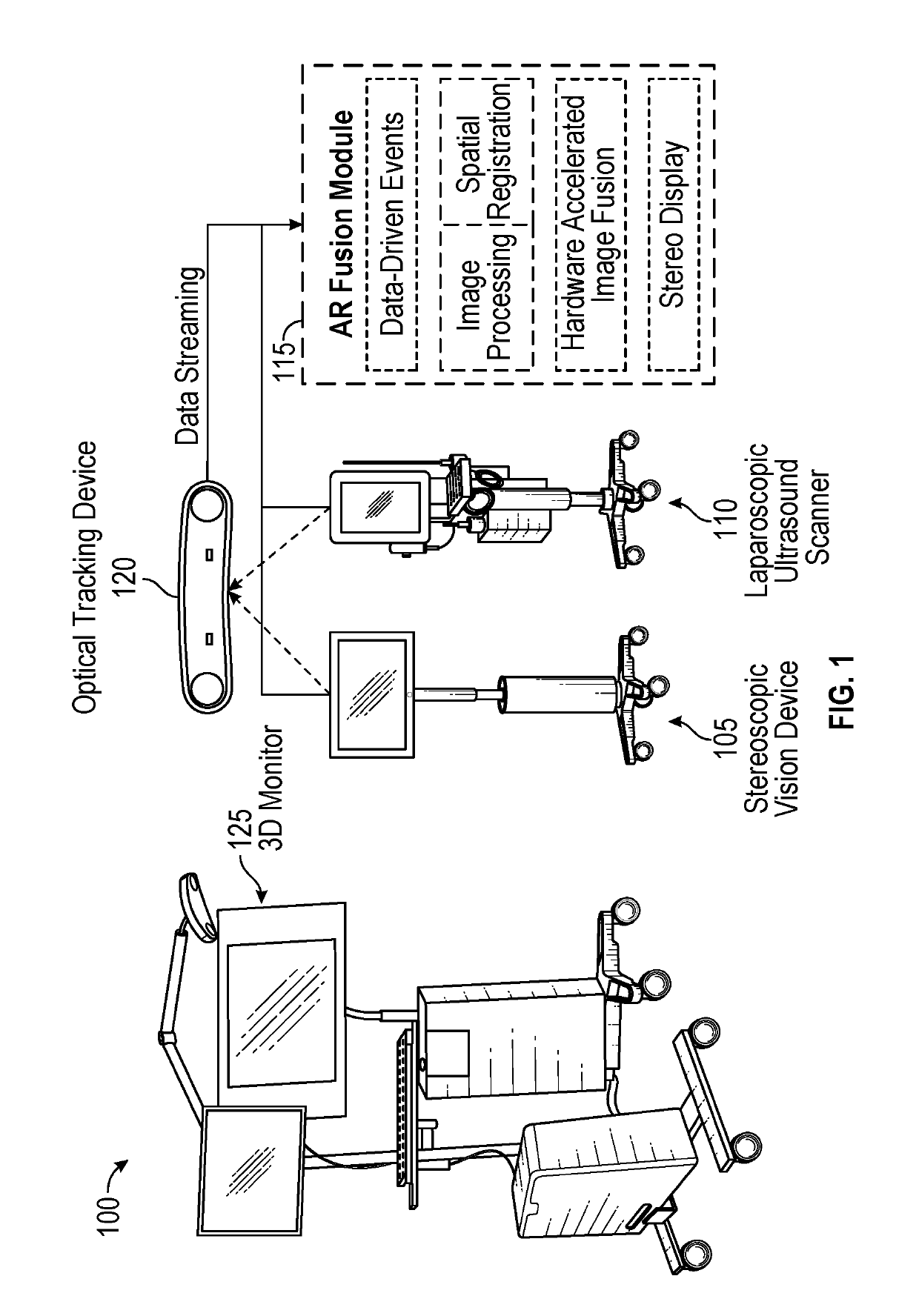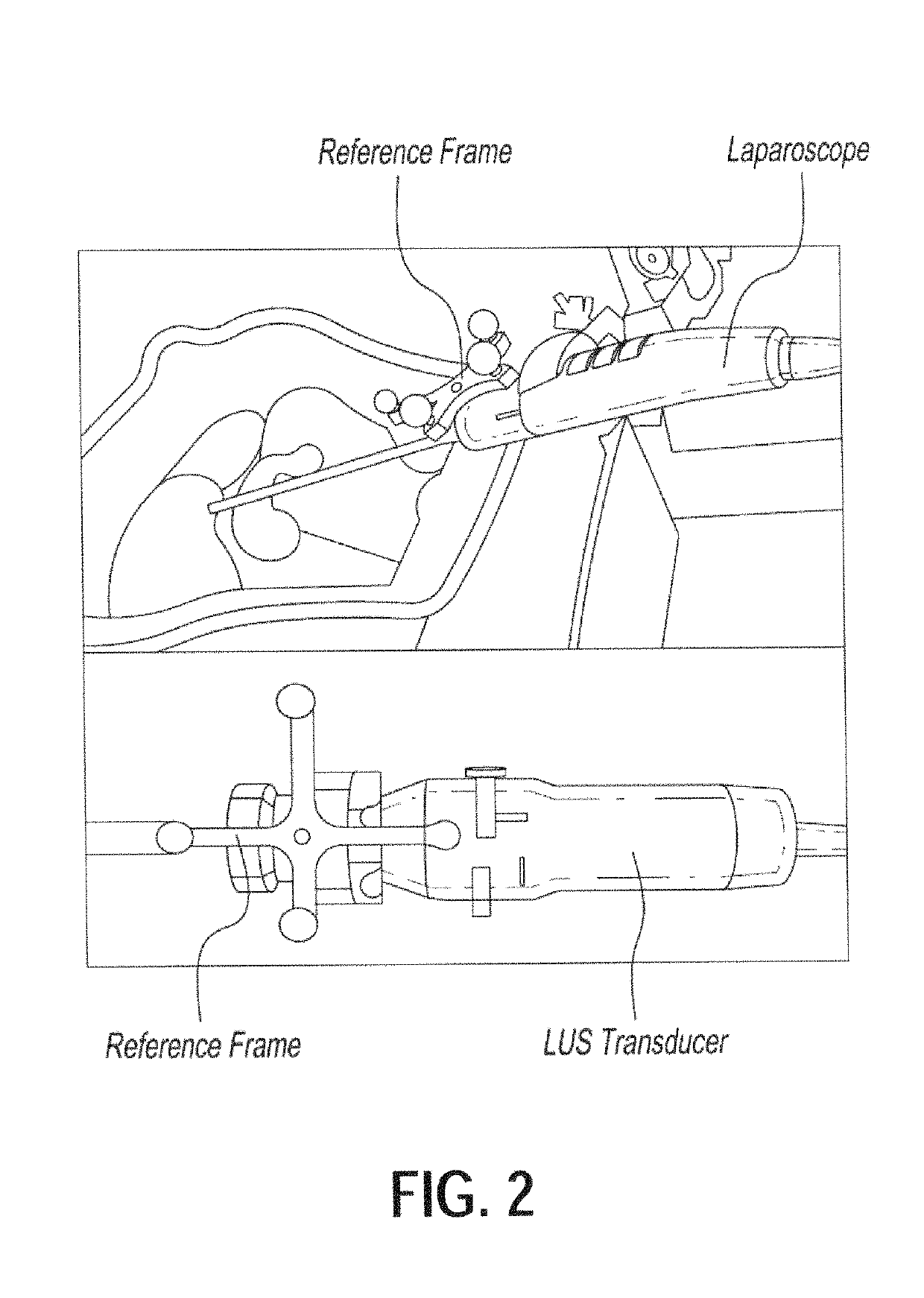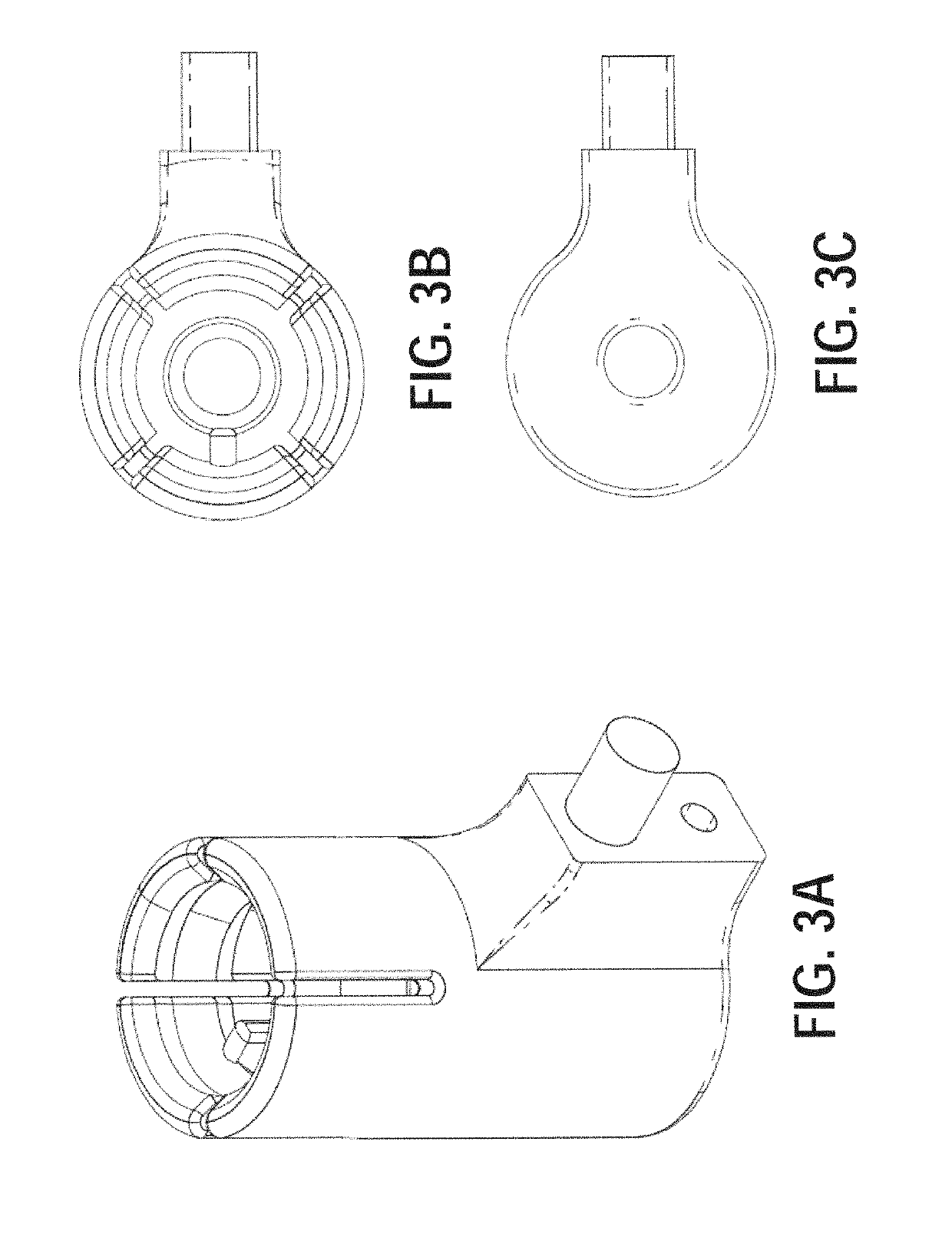System for generating composite images for endoscopic surgery of moving and deformable anatomy
a technology of moving and deformation anatomy and composite images, which is applied in the field of minimally invasive surgeries, can solve the problems of limited surgical training, limited surgical training, and inability to give surgeons a good appreciation of depth and 3d spatial relationships among anatomical structures, and achieves enhanced understanding, reduced procedure time, and improved surgical efficiency.
- Summary
- Abstract
- Description
- Claims
- Application Information
AI Technical Summary
Benefits of technology
Problems solved by technology
Method used
Image
Examples
Embodiment Construction
[0059]Referring now to the drawings, wherein like reference numerals designate identical or corresponding parts throughout the several views.
[0060]FIG. 1 illustrates an exemplary stereoscopic AR system and a block diagram AR fusion module with major processing circuitry components for generating composite image data, according to certain embodiments. Stereoscopic AR system 100 includes two imaging devices: a stereoscopic vision device 105 and a laparoscopic ultrasound scanner 110. In certain embodiments, the stereoscopic vision device 105 may be a VSII by Visionsense Corp. with a 5-mm laparoscope (called 3D laparoscope henceforth), and the ultrasound scanner device 110 may be a flex Focus 700 by BK Medical with a 10-mm laparoscopic transducer. In certain embodiments, the 3D laparoscope may be a zero-degree scope with 70-degree field of view. The 3D laparoscope may have a fixed focal length of 2.95 cm. The 3D laparoscope provides an integrated light source and automatic white balance...
PUM
 Login to View More
Login to View More Abstract
Description
Claims
Application Information
 Login to View More
Login to View More - R&D
- Intellectual Property
- Life Sciences
- Materials
- Tech Scout
- Unparalleled Data Quality
- Higher Quality Content
- 60% Fewer Hallucinations
Browse by: Latest US Patents, China's latest patents, Technical Efficacy Thesaurus, Application Domain, Technology Topic, Popular Technical Reports.
© 2025 PatSnap. All rights reserved.Legal|Privacy policy|Modern Slavery Act Transparency Statement|Sitemap|About US| Contact US: help@patsnap.com



